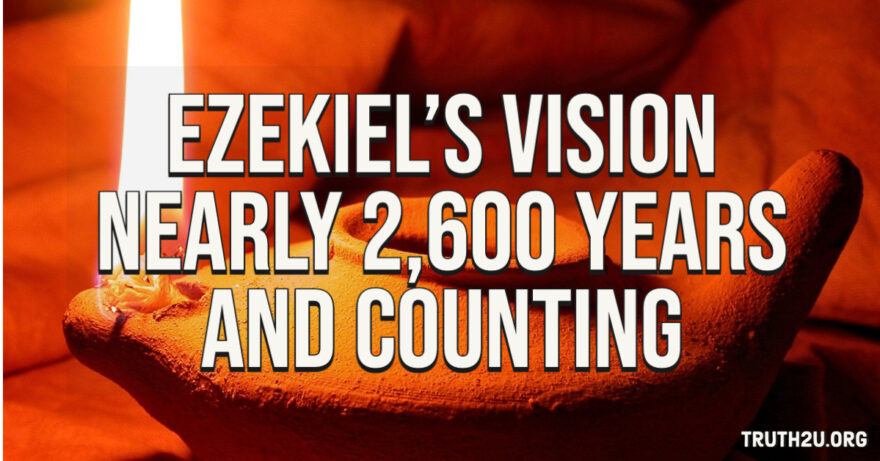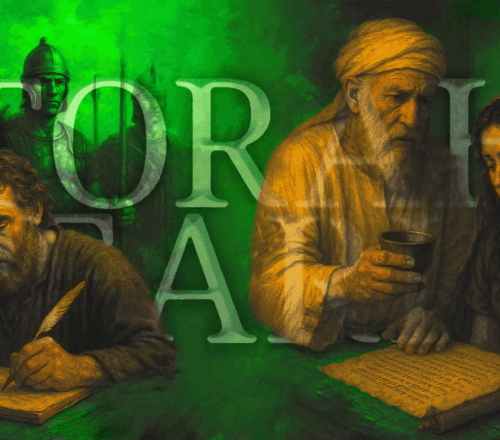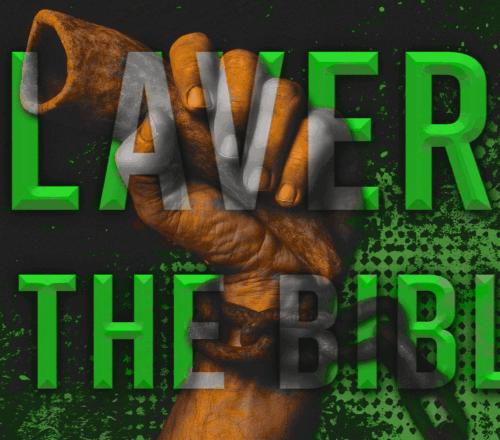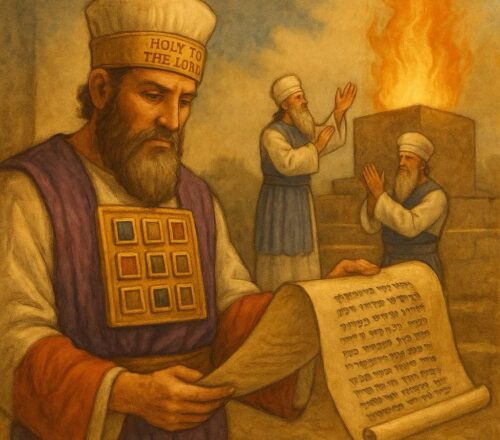Ezekiel’s Vision – Nearly 2,600 Years and Counting
In this episode, Ross and Jono discuss a question sent in by Piper Kelly. The question was based upon Ezekiel’s vision contained in chapters 40-48. Piper said, “This prophecy has not been fulfilled. I would love to hear you both discuss the Tabernacle, the sacrifices, the prince, the healing waters, the trees with healing leaves, the boundaries of the land for the tribes, etc. Knowing that sin sacrifices are prophesied really made me dig deep while I was still embedded in Christianity. This caused a major paradigm shift and played a significant role in my spiritual journey. I have heard Ross hint that this prophecy could be an “either/or” type of prophecy and would like to hear this discussed in more detail.” Launching off of Piper’s question, Ross and Jono provide their listeners with plenty to think about. What is an “either/or” prophecy? What did the ancient rabbis think of Ezekiel, and of these prophecies? Why have these plans not been implemented since they were given in 573 BCE? Does God desire sacrifices? Are they part of the ideal? Don’t miss, Ezekiel’s Vision – Nearly 2,600 Years and Counting.






When will the next session of Gleanings from Genesis be presented. I have invited other people to listen and I will need to tell them when. Thanks
I will offer a sacrifice of thanks to you and will call on the name of YHVH. Psalm 116. I believe that the sacrifices God wants is like the song that says “We bring the sacrifice of praise…Into the house of the Lord. And we offer up to you the sacrifices of thanksgiving”. Thanks guys for the study 🙂
Thank you gentlemen!! I really enjoyed that recording! I feel like I may need to go back and give it another listen to thoroughly wrap my brain around all that was discussed. I appreciate you both!!
G’day Billy, It’s great to hear from you! We certainly intend to return to the Gleanings from Genesis program this week. 🙂
I find myself in agreement with Ross. Ezekiel’s prophecies are full of vivid imagery so I am careful not to read it to literally. For instance,the ‘living creatures’ (alive ones) of Chapter 1 seems likely to be a description of the encampment in the wilderness when I consider the arrangement and the 4 faces (east/Judah/lion, south/Reuben/man, west/Ephraim/ox and north/Dan/Eagle) as the outer circle with the inner circle being the Levitical encampment. Notice how these alive ones are under the firmament with their wings likely being the tzitzis on the four corners of their garments. Sound of their wings being their declaring the commandments. So, when Ezekiel describes the temple, among other things, I find it especially interesting that the ‘sides’ are translated from the Hebrew ruach, which means spirit/wind (Ezek 42:16, 17, 18, & 19). What exactly is Ezekiel describing? I don’t know, but I wouldn’t claim it is a literal temple.
Further to the sacrificial system: It has been revealed to me that in Deut. 29:1 there was another covenant given by Moses in the land of Moab, beside the covenant made in Horeb. What happened in Moab? Num. 25:1-3. This brings us back to the give us a king, but it might not work out the way you think. Yehovah sees their desire to have sacrifices and does not want them to be sacrificing to the Moabites mighty ones, so reluctantly, allows them to have sacrifices at their own peril. Deut. 28:45…till thou be destroyed; because thou hearkenedst not unto the voice of Jehovah thy Elohim,… Exodus 19:5 Now therefore, IF ye will obey my voice (indeed,#8085) and keep my covenant… Gen. 18:19… to do justice, (tsedawkaw) and judgment (mishpawt); Jer. 9:24 (same instructions) John 16:8-11 (same instructions) ! John 2:4 (to know him) Jer. 22:15,16 ; John 7:49!!! Matt. 7:20, John 8:39 ; Gen 17:9, 10. This may be too controversial for most that like to have their ears tickled. Look forward to comments. A voice crying out in the wilderness, Shaloam.
Correction to Benjamin Reed says : ! John 2:4 needs to read- First John 2:4
Thanks guys for the study, I’m aware of the perspective of God really not wanting sacrifices, in fact I kind of agree with ross and understand that’s just a concensus because of our need to do sacrifices, anyways Yehovah made sacrifices part of his Torah and a sacrifice like pesach, though we can’t do it today and is a different sicrifice, I guess one should obey the commandment to present the pesach to God anyways (if there were a temple and kosher priest). But I didn’t get quiet well the response on Ezequiel, despite one may agree with other teachings of Ezequiel what do we do with this passages relating to a future Temple and sacrifices, if not literal, how are all this specific literal details may be taken “allegorical”?
I understand many things in the Bible are allegorical just like the other passages of Ezequiel like the vision everyone is aware of, but for this so detailed passages to have other meanings would require an oral law because there’s no way one can get an allegorical meaning out of that, and I don’t think God told Moses about the interpretation of ezequiels prophecies.
Hope it doesn’t sound disrespectful I really enjoy the knowledge you share but would like to hear more, maybe a part 2?! Of a possible interpretation of those chapters governing sacrifices and a temple (if is not talking about sacrifices and a temple) (once again I agree with ross on sacrifices)
Thanks for all this time you have dedicated your time to share the word of God Jono.